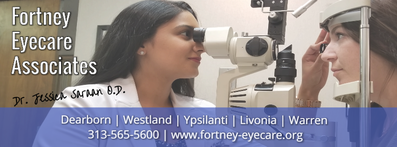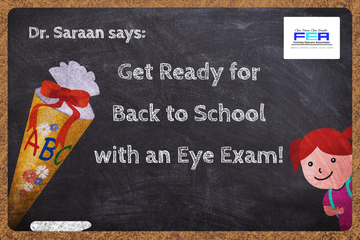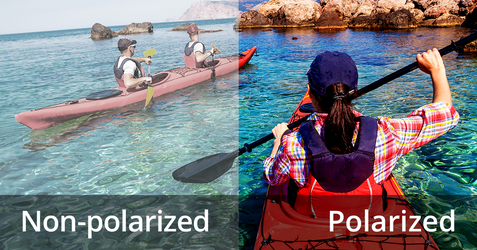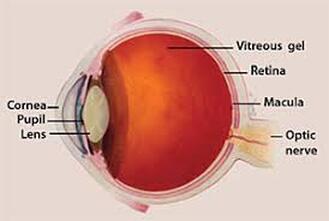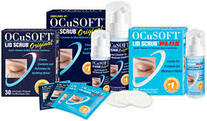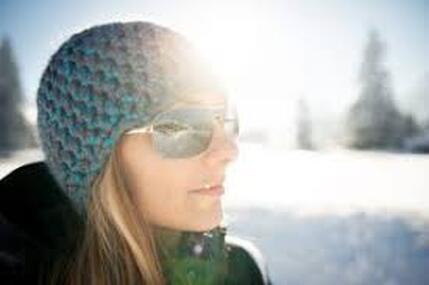The Doctors Notes
A comprehensive eye exam is the only way to truly identify what the issue with your child's vision may be. However, you should be able to know a few of the signs when there are problems with your child's eyes. here are a few of the signs that your child is in need of glasses.
08/07/2019
- Squinting - One of the major signs that your child needs glasses is if they squint to look at something whether it is far away or up close. Squinting is usually a sign that your child is suffering from a refractive error, which affects how well the eye focuses on an image. When your child squints, it is temporarily improving their vision so that they can see an image clearer. Going to see an eye doctor will identify if they are near or farsighted.
- Excessive Eye Rubbing - If your child is rubbing their eyes a lot, that may be a sign they are straining their eyes trying to see an image. Glasses may be needed. There are several other reasons your child might be rubbing their eyes, such as ocular allergies.
- Sitting Too Close to the TV and Other Devices - Have you noticed that your child always sits very close to the TV or holds an electronic device close to their face while using it? There are signs that your child might be nearsighted, which means that they see better at a close range compared to far away. Wearing glasses is often the best solution for your child if they are nearsighted.
- Headaches - Is your child complaining of headaches especially after reading or after coming home from school? Headaches are often a result of straining the eyes or making them work too hard. This is often seen in children who have hyperopia or farsightedness.
- Amblyopia - Commonly referred to as "lazy eye", amblyopia is reduced or poor vision in one or both eyes that occurs during early childhood due to lack of proper visual stimulation. Amblyopia can be a result of a variety of conditions including strabismus (misalignment of the eyes) , a pediatric cataract (which disrupts light passing through the eye), or most commonly a high glasses prescription that is not detected early enough. Amblyopia is much easier to treat when the child is very young, around preschool age. Amblyopia effects two to three percent of Americans.
- Hyperopia & Myopia - Hyperopia, referred to as farsightedness, is when a person can see distant objects clearly but has trouble seeing things up close. Myopia, referred to as nearsightedness, is the opposite of hyperopia and consists of a person being able to see close objects but having difficulty at a distance. Both conditions involve light not focusing on the back of the eye properly. Often, if these conditions are left untreated at a young age, your child can develop amblyopia. A common treatment for these conditions include glasses or contacts when the child is old enough to handle them.
08/07/2019
|
GLAUCOMA - Dr. Jessica Saraan
Did you know that glaucoma is one of the leading causes of blindness in the United States? The earlier we can detect the disease, the earlier we can help treat it. Make sure you’re scheduling an annual eye exam so that we can be certain to check for any signs you may not have noticed. We want to make sure we can help you identify the symptoms of glaucoma, take appropriate preventative measures, and receive necessary treatment. |
- Glaucoma is a group of eye conditions that damage the optic nerve and cause irreversible vision los
- Most forms of glaucoma have no warning signs and the effects are so gradual that you may not notice a change in vision until the condition is at an advanced stage.
- Because vision loss due to glaucoma can’t be recovered, it is important to have regular eye exams that include getting the eyes dilated.
- If glaucoma is recognized early, vision loss can be slowed or prevented. If you have this condition, you will generally need treatment for the rest of your life.
- If left untreated, glaucoma will eventually cause blindness. Even with treatment, about 15 percent of people with glaucoma become blind in at least one eye within 20 years.
Causes
Glaucoma is the result of damage to the optic nerve. As this nerve gradually deteriorates, blind spots develop in your visual field. For reasons that doctors don't fully understand, this nerve damage is usually related to increased pressure in the eye.
Elevated eye pressure is due to a buildup of a fluid (aqueous humor) that flows throughout the inside of your eye. This internal fluid normally drains out through a tissue called the trabecular meshwork at the angle where the iris and cornea meet. When fluid is overproduced or the drainage system doesn't work properly, the fluid can't flow out at its normal rate and eye pressure increases.
Glaucoma tends to run in families. In some people, scientists have identified genes related to high eye pressure and optic nerve damage.
Types of glaucoma include:
1. Open-angle glaucoma
Open-angle glaucoma is the most common form of the disease. The drainage angle formed by the cornea and iris remains open, but the trabecular meshwork is partially blocked. This causes pressure in the eye to gradually increase. This pressure damages the optic nerve. It happens so slowly that you may lose vision before you're even aware of a problem.
2. Angle-closure glaucoma
Angle-closure glaucoma, also called closed-angle glaucoma, occurs when the iris bulges forward to narrow or block the drainage angle formed by the cornea and iris. As a result, fluid can't circulate through the eye and pressure increases. Some people have narrow drainage angles, putting them at increased risk of angle-closure glaucoma.
Angle-closure glaucoma may occur suddenly (acute angle-closure glaucoma) or gradually (chronic angle-closure glaucoma). Acute angle-closure glaucoma is a medical emergency.
3. Normal-tension glaucoma
In normal-tension glaucoma, your optic nerve becomes damaged even though your eye pressure is within the normal range. No one knows the exact reason for this. You may have a sensitive optic nerve, or you may have less blood being supplied to your optic nerve. This limited blood flow could be caused by atherosclerosis — the buildup of fatty deposits (plaque) in the arteries — or other conditions that impair circulation.
4. Glaucoma in children
It's possible for infants and children to have glaucoma. It may be present from birth or develop in the first few years of life. The optic nerve damage may be caused by drainage blockages or an underlying medical condition
.
5. Pigmentary glaucoma
In pigmentary glaucoma, pigment granules from your iris build up in the drainage channels, slowing or blocking fluid exiting your eye.
Symptoms
The signs and symptoms of glaucoma vary depending on the type and stage of your condition. For example:
1. Open-angle glaucoma
• Patchy blind spots in your side (peripheral) or central vision, frequently in both eyes. Many people do not notice the early stages of this because with both eyes working together it is hard to tell if we are missing areas in the periphery.
• Tunnel vision in the advanced stages
2. Acute angle-closure glaucoma
• Severe headache, eye pain, nausea, vomiting, halos around lights, redness
Risk factors
Because chronic forms of glaucoma can destroy vision before any signs or symptoms are apparent, be aware of these risk factors:
• Having high internal eye pressure (intraocular pressure)
• Being over age 60
• Being black, Asian or Hispanic
• Having a family history of glaucoma
• Having certain medical conditions, such as diabetes, heart disease, high blood pressure and sickle cell anemia
• Having corneas that are thin in the center
• Being extremely nearsighted or farsighted
• Having had an eye injury or certain types of eye surgery
• Taking corticosteroid medications, especially eyedrops, for a long time
Prevention
These self-care steps can help you detect glaucoma in its early stages, which is important in preventing vision loss or slowing its progress.
• Get regular dilated eye examinations. Regular comprehensive eye exams can help detect glaucoma in its early stages, before significant damage occurs.
• Know your family's eye health history. Glaucoma tends to run in families. If you're at increased risk, you may need more frequent screening.
• Exercise safely. Regular, moderate exercise may help prevent glaucoma by reducing eye pressure. Talk with your doctor about an appropriate exercise program.
• Take prescribed eyedrops regularly. Glaucoma eyedrops can significantly reduce the risk that high eye pressure will progress to glaucoma. To be effective, eyedrops prescribed by your doctor need to be used regularly even if you have no symptoms.
• Wear eye protection. Serious eye injuries can lead to glaucoma. Wear eye protection when using power tools or playing high-speed racket sports in enclosed
01/2020
|
Polarized Sunglasses - Dr. Jessica Saraan
UV Radiation and the Aging Eye Ultraviolet radiation from the sun can cause cumulative damage to your eyes as you age, but you can protect your eyes by wearing sunglasses everyday. As we get older, our eyes undergo changes that can cause vision changes and eye diseases such as age-related macular degeneration (AMD). |
UV radiation carries more energy than visible light. and can do greater damage to our eyes. As we age, the damage has more times to accumulate and forms a cataract. Cataract is believed to be caused by many years of exposure to UV radiation from the sun.
Polarized sunglasses are not just a great option for people who spend a lot of time near water or outdoors. Anyone who is bothered by glare outdoors can benefit from these type of sunglasses. These sunglasses can be helpful for driving too, because they reduce glare-causing reflections from flat surfaces. Light sensitive patients and patients who have had cataract surgery will also benefit from polarized glasses.
How Polarized Sunglasses work
Sunlight is scattered in all directions and regular sunglasses will only filter light scattering in one direction. Polarization creates vertical openings for light so that only vertical light rays that approach your eyes can fit it. The lenses will block out all horizontal light waves. As a result, the image you see with polarized lenses will be darker but clearer and the details will be easier to see. People who use polarized sunglasses for long stretches of time often say they are less tired then usual after hours of being out in the sun. People who fish in particular find polarized sunglasses drastically cut the glare and help them see into the water.
Options with polarization
Polarized sunglasses with progressive lenses are a great option for people over the age of 40.
For the best performance with any polarized sunglasses, ask us about having anti-reflective coating applies to the backside of the lenses. This is eliminate distracting reflections from the back surface of your sunglasses when the sun is behind you.
Even if you have a small amount of refractive error, correcting your outdoor vision with prescription polarized sunglasses will help you see as clearly and comfortably as possible in the bright sunlight.
06/2019
Polarized sunglasses are not just a great option for people who spend a lot of time near water or outdoors. Anyone who is bothered by glare outdoors can benefit from these type of sunglasses. These sunglasses can be helpful for driving too, because they reduce glare-causing reflections from flat surfaces. Light sensitive patients and patients who have had cataract surgery will also benefit from polarized glasses.
How Polarized Sunglasses work
Sunlight is scattered in all directions and regular sunglasses will only filter light scattering in one direction. Polarization creates vertical openings for light so that only vertical light rays that approach your eyes can fit it. The lenses will block out all horizontal light waves. As a result, the image you see with polarized lenses will be darker but clearer and the details will be easier to see. People who use polarized sunglasses for long stretches of time often say they are less tired then usual after hours of being out in the sun. People who fish in particular find polarized sunglasses drastically cut the glare and help them see into the water.
Options with polarization
Polarized sunglasses with progressive lenses are a great option for people over the age of 40.
For the best performance with any polarized sunglasses, ask us about having anti-reflective coating applies to the backside of the lenses. This is eliminate distracting reflections from the back surface of your sunglasses when the sun is behind you.
Even if you have a small amount of refractive error, correcting your outdoor vision with prescription polarized sunglasses will help you see as clearly and comfortably as possible in the bright sunlight.
06/2019
Dry:
Risk Factors
The biggest risk factor for Macular Degeneration is age. Your risk increases as you age, and the disease is most likely to occur in those 55 and older.
Other factors include:
Reducing Your Risk
05/09/2019
- About 90% of cases are dry macular degeneration.
- It tends to progress more slowly the the wet type.
- Small, yellowish deposits, called drusen, form under the macula and cause it to deteriorate over time.
- About 10% of patients with macular degeneration have the wet form of the disease.
- Abnormal blood vessels begin to grow toward the macula. These new blood vessels then begin to leak fluid into the macula causing it to lift up and pull away from its base.
- This can result in rapid and severe vision loss.
- Early: most people do not experience vision loss in the early stage of this disease. This is why regular eye exams are important! Early macular degeneration is diagnosed by the presence of drusen (yellow deposits beneath the retina.)
- Intermediate: there may be some vision loss at this stage but there may not be noticeable symptoms. An eye exam will reveal larger drusen and/or pigment changes in the retina.
- Late: at this stage vision loss has become noticeable.
Risk Factors
The biggest risk factor for Macular Degeneration is age. Your risk increases as you age, and the disease is most likely to occur in those 55 and older.
Other factors include:
- Genetics - People with family history of AMD (age-related macular degeneration) are at a higher risk.
- Race - Caucasians are more likely to develop the disease then African-Americans or Hispanics/Latinos
- Smoking - Smoking DOUBLES the risk of AMD.
Reducing Your Risk
- Protect your eyes with polarized sunglasses from UV light.
- Eat green leafy vegetables and colorful fruits that have antioxidants.
- eat food rich in omega-3's or take an omega-3 supplement.
- Stop Smoking
- Maintain an active lifestyle
05/09/2019
Dermatitis - Dr Jessica Saraan
Dermatitis is the general term used for any form of inflammation of the skin with symptoms of itchiness, dryness, and redness. Over time there can even be some cracking and coarseness of the skin. When this is cause by something coming into direct contact with your skin it is called contact dermatitis. Cosmetics are a very common cause of contact dermatitis and are something many of us use regularly.
In most places on your body using a steroid injection could help take care of the problem. However this is not always a good idea around your eyes.
Things you can do at home:
Dermatitis is the general term used for any form of inflammation of the skin with symptoms of itchiness, dryness, and redness. Over time there can even be some cracking and coarseness of the skin. When this is cause by something coming into direct contact with your skin it is called contact dermatitis. Cosmetics are a very common cause of contact dermatitis and are something many of us use regularly.
In most places on your body using a steroid injection could help take care of the problem. However this is not always a good idea around your eyes.
Things you can do at home:
- Use OcuSoft Lid Scrubs to clean the lids and lash lines even after taking off makeup with a make-up remover
- Cool compress using a washcloth or refrigerating an eye mask for 15-30 minutes can help reduce redness and irritation.
- Taking a Benadryl may be helpful if the itching is severe
- Replace your mascara and liquid every 3-6 months.
- Give us a call at 313-565-5600 or make an appointment with us online if your problems are persisting or worsening.
Triggers:
Eyes feeling itchy, watery and red? It could be eye allergies and oral antihistamines might not be enough to calm the itch.
Home Remedies:
See your optometrist for prescription or over-the-counter allergy eye drops to help fight the allergies this spring!
03/07/2019
- Outdoor allergens: pollen from grass, flowers, and trees
- Indoor allergens: pet dander, dust mites and mold
- General irritants: cigarette smoke and perfume.
Eyes feeling itchy, watery and red? It could be eye allergies and oral antihistamines might not be enough to calm the itch.
Home Remedies:
- Cool Compress
- Wear sunglasses to keep pollen out of the eyes
- Wash Hands after touching pets
- Was bedding frequently with HOT water
- Consider switching to daily disposable contact lenses
- Prescription allergy eye drops
See your optometrist for prescription or over-the-counter allergy eye drops to help fight the allergies this spring!
03/07/2019
|
Spring Allergies - Dr Jessica Saraan
Eye Allergies are a common sign that spring is right around the corner. Pollen, dust, pet dander and mold spores are common triggers of itchy eyes. Not everyone is allergic to the same type of pollen, so it is possible a specific flower might trigger an allergic reaction in your eyes. If you suffer from allergic conjunctivitis, your symptoms can range from very mild to severe. |
Common symptoms are itchy eyes, redness, tearing and a burning sensation. However, other conditions, such as pinkeye can cause allergy-like symptoms, so its a good idea to see your optometrist.
Snow Blindness: A Winter Sunburn On Your Eyes
One way the sun can impact our eyes in winter is snow blindness. Too much sunlight can actually sunburn our eyes and cause temporary blindness, and this condition is much more common in the winter due to sunlight reflecting off the snow. Occasionally it cant take hours for symptoms to appear, we often don't know we have it until it's too late and we've been exposing our eyes to all that sunlight for even longer. Luckily there are things we can do to protect our eyes from winter conditions.
Sunglasses: Not just a Summer Thing
If you think sunglasses are only for summer, think again! A pair of polarized, 100% UV-blocking sunglasses are your best defense against harmful UV rays when your going about your day during snowy conditions.
Goggles: Don't Hit The Slopes Without Them
Those of us who enjoy skiing and snowboarding will be exposed to more UV rays than people who prefer summer activities because the atmosphere is thinner at higher elevations, making the sunlight harsher. This is just one reason ski goggles are a crucial piece of equipment for winter athletes.
In addition to finding goggles with 100-percent UV protection, you can buy a pair the has vents or anti-fog coating, preventing them from fogging up when you get going. Polarized lenses will eliminate that harsh glare off of the snow, making it much easier for you to see the slope. Goggles will also help keep debris (ice, dirt, bark, leaves) from entering your eyes, helping to prevent red, gritty, swollen eyes, as well as permanent vision damage. If you wear prescription glasses, you can also find ski goggles that fit comfortably over them.
Combating Winter Dry Eye
The air can often be drier in winter than at other times of the year and the heating we sue indoors can dry it out even more. this can leave our eyes dry and irritated. to fight back against dry eye in winter, make sure you're staying hydrated, use seat warmers in the car a little more and the heater a little less, and consider getting a humidifier for your home.
02/16/2019
One way the sun can impact our eyes in winter is snow blindness. Too much sunlight can actually sunburn our eyes and cause temporary blindness, and this condition is much more common in the winter due to sunlight reflecting off the snow. Occasionally it cant take hours for symptoms to appear, we often don't know we have it until it's too late and we've been exposing our eyes to all that sunlight for even longer. Luckily there are things we can do to protect our eyes from winter conditions.
Sunglasses: Not just a Summer Thing
If you think sunglasses are only for summer, think again! A pair of polarized, 100% UV-blocking sunglasses are your best defense against harmful UV rays when your going about your day during snowy conditions.
Goggles: Don't Hit The Slopes Without Them
Those of us who enjoy skiing and snowboarding will be exposed to more UV rays than people who prefer summer activities because the atmosphere is thinner at higher elevations, making the sunlight harsher. This is just one reason ski goggles are a crucial piece of equipment for winter athletes.
In addition to finding goggles with 100-percent UV protection, you can buy a pair the has vents or anti-fog coating, preventing them from fogging up when you get going. Polarized lenses will eliminate that harsh glare off of the snow, making it much easier for you to see the slope. Goggles will also help keep debris (ice, dirt, bark, leaves) from entering your eyes, helping to prevent red, gritty, swollen eyes, as well as permanent vision damage. If you wear prescription glasses, you can also find ski goggles that fit comfortably over them.
Combating Winter Dry Eye
The air can often be drier in winter than at other times of the year and the heating we sue indoors can dry it out even more. this can leave our eyes dry and irritated. to fight back against dry eye in winter, make sure you're staying hydrated, use seat warmers in the car a little more and the heater a little less, and consider getting a humidifier for your home.
02/16/2019

